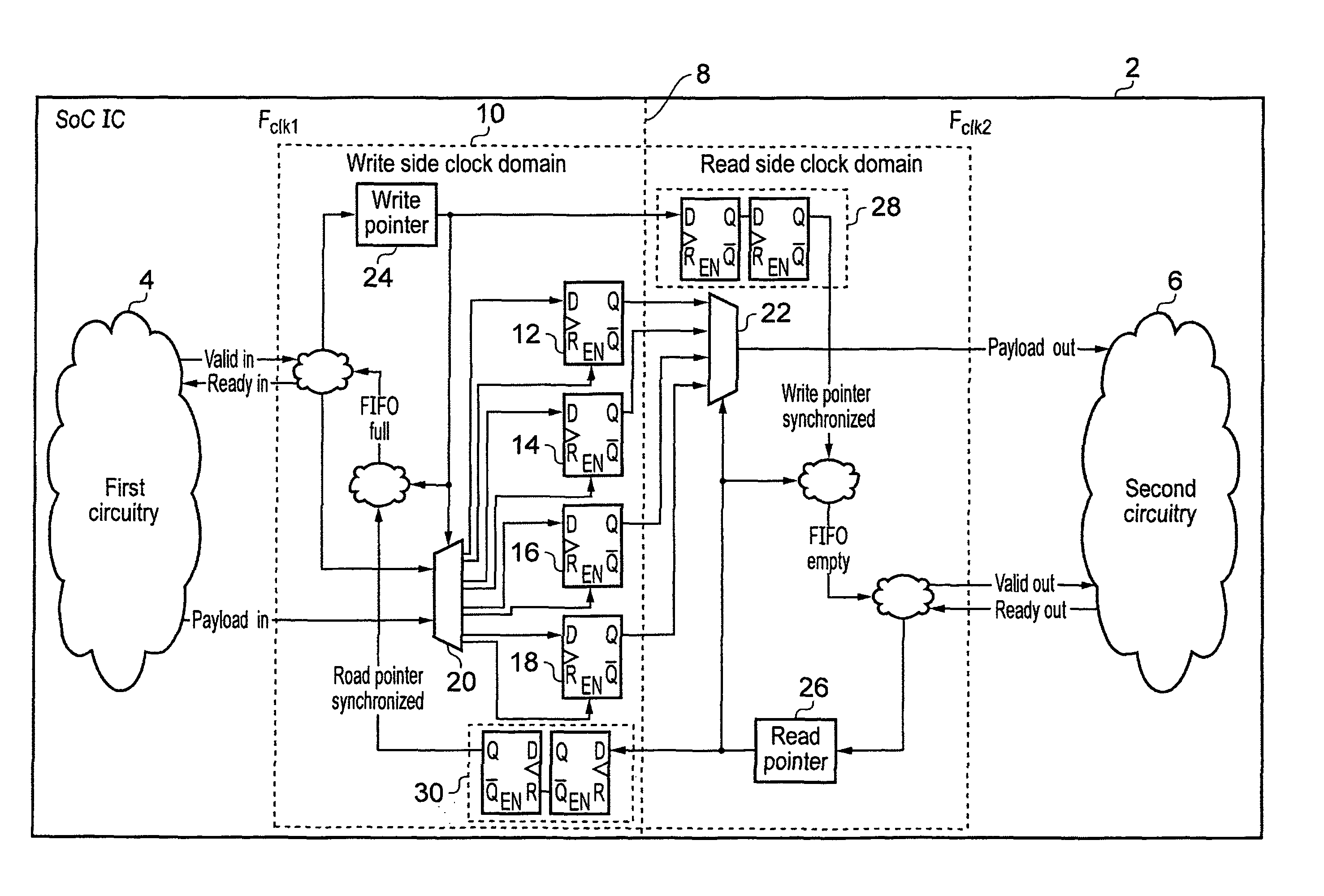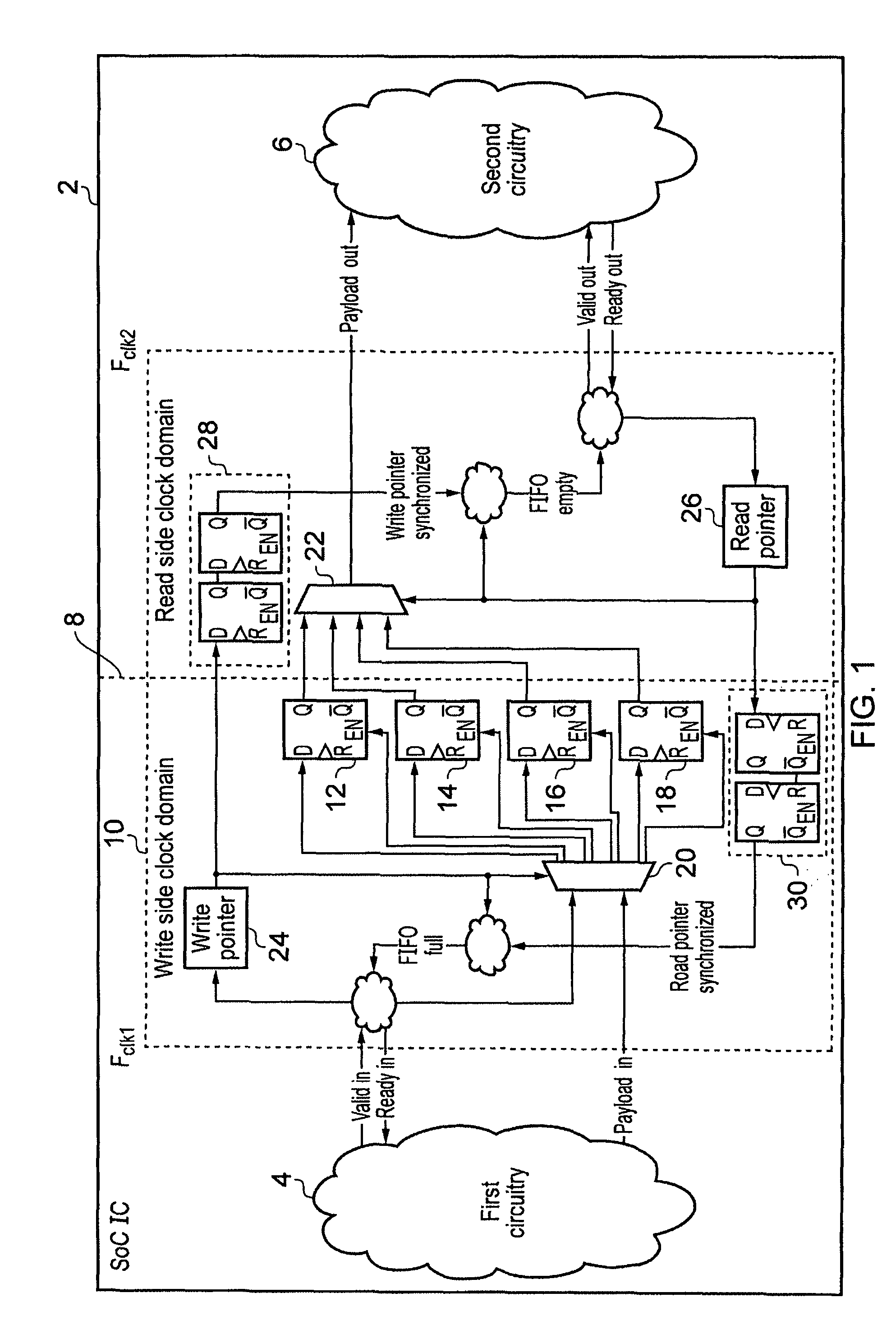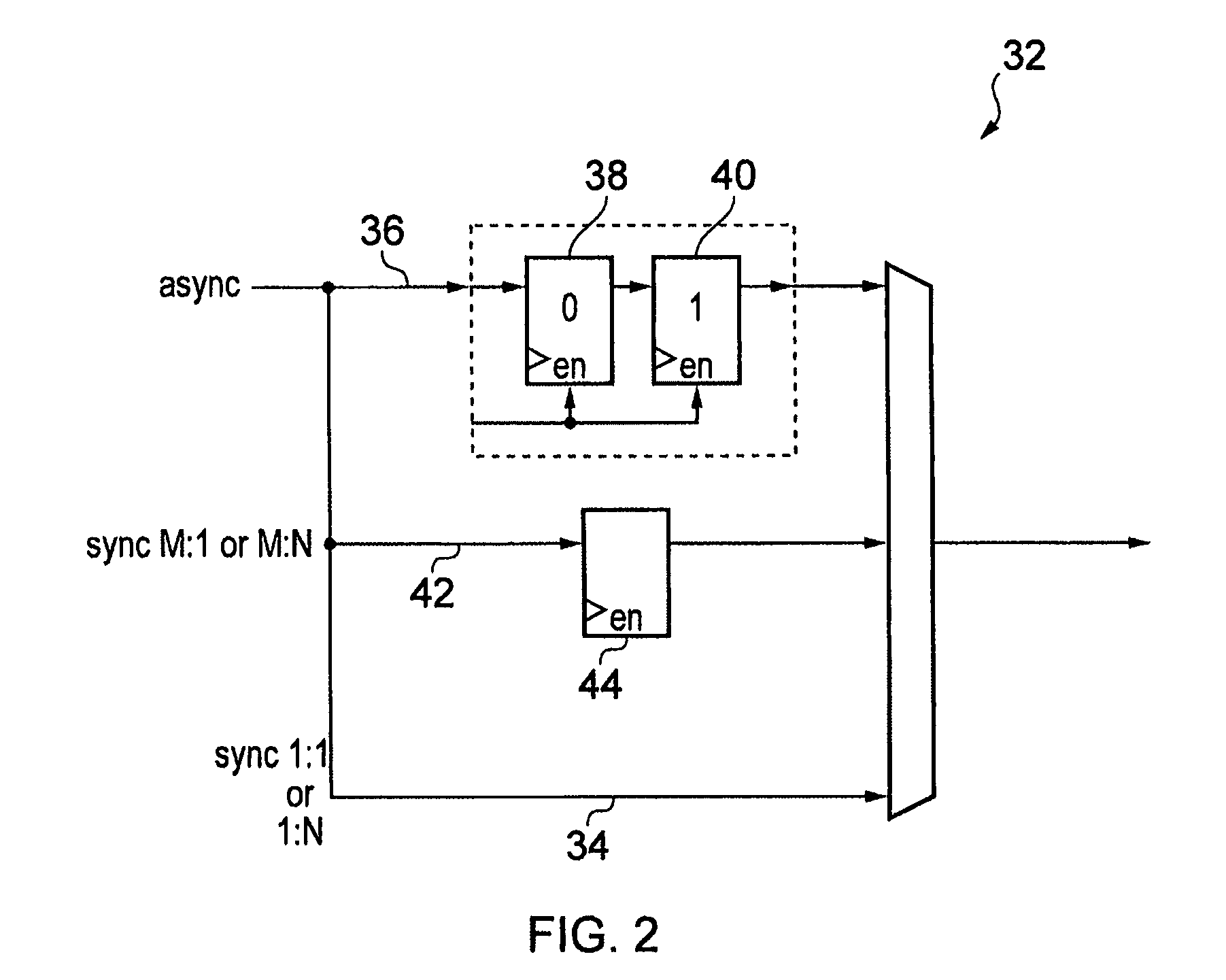Synchronising between clock domains
a clock domain and clock domain technology, applied in the field of data processing systems, can solve the problems of difficult switching between the use of these mechanisms, and change can take many hundreds of processing cycles to perform, and achieve the effect of reducing hardware overhead and increasing synchronisation delay
- Summary
- Abstract
- Description
- Claims
- Application Information
AI Technical Summary
Benefits of technology
Problems solved by technology
Method used
Image
Examples
Embodiment Construction
[0053]FIG. 1 illustrates a system-on-chip integrated circuit 2 including first circuitry 4 located within a first clock domain and second circuitry 6 located within a second clock domain. In this example embodiment the first circuitry 4 is arranged to pass a data value (payload) across a clock boundary 8 to the second circuitry 6. Accordingly, the first circuitry 4 is on the write side and the second circuitry 6 is on the read side of a first-in-first-out memory (FIFO) 10. This FIFO 10 has four memory slots 12, 14, 16, 18 which are written to by the first circuitry via a de-multiplexer 20. On the read side, the second circuitry 6 reads these memory slots 12, 14, 16, 18 via a multiplexer 22. A write pointer controls the selection made by the de-multiplexer 20 of the next memory slot 12, 14, 16, 18 to be written to and a read pointer controls the multiplexer 22 to point to the next memory slot 12, 14, 16, 18 from which a data value is to be read. The write pointer is stored within the...
PUM
 Login to View More
Login to View More Abstract
Description
Claims
Application Information
 Login to View More
Login to View More - R&D
- Intellectual Property
- Life Sciences
- Materials
- Tech Scout
- Unparalleled Data Quality
- Higher Quality Content
- 60% Fewer Hallucinations
Browse by: Latest US Patents, China's latest patents, Technical Efficacy Thesaurus, Application Domain, Technology Topic, Popular Technical Reports.
© 2025 PatSnap. All rights reserved.Legal|Privacy policy|Modern Slavery Act Transparency Statement|Sitemap|About US| Contact US: help@patsnap.com



